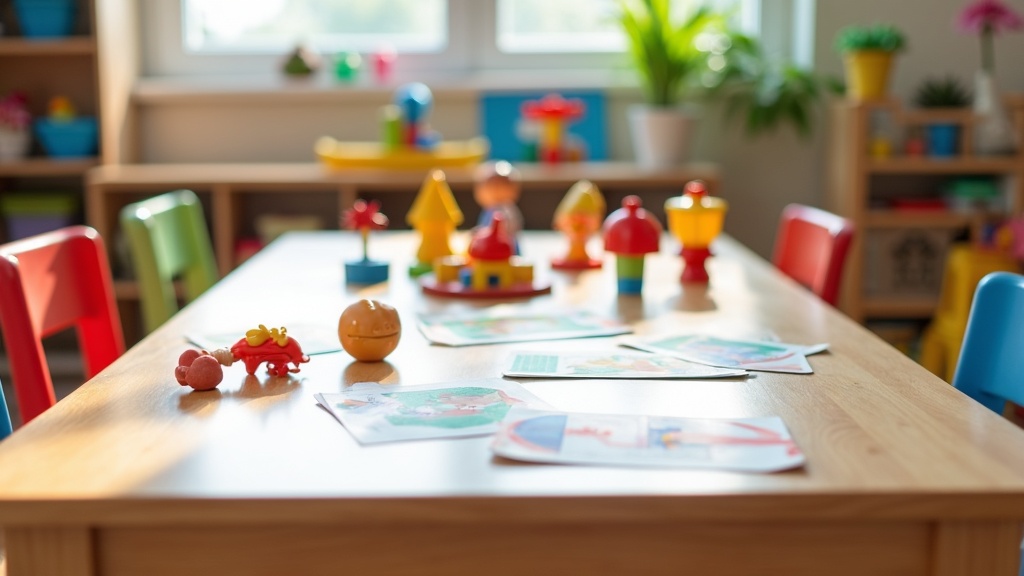Noticing possible speech and language delays in kids can feel a bit overwhelming as a parent or caregiver. These delays show up in different ways, and catching early signs really makes a difference for how kids communicate later on. Knowing what to look out for helps with figuring out when it might be time to check in with a speech-language pathologist or your child’s doctor. I put this article together to share what I’ve learned about speech and language delays, as well as some practical tips anyone can use to spot potential concerns early on.

Understanding Speech Versus Language Delays
Speech and language delays sound similar, but they’re actually about different skills. A speech delay is when a child struggles to produce sounds clearly or can’t say words the way others their age do. A language delay involves challenges with understanding or using words and sentences to communicate, follow directions, or express needs. Sometimes, one occurs without the other, and in other cases, both happen together. Many families wonder where natural variation ends and a need for extra help begins. Pediatricians and speech therapists rely on milestone checklists to help decide when a child might benefit from an evaluation.CHECK OUT : LEARN HOW TO DO WORK FROM HOME
Common Signs of Speech and Language Delays
There’s a wide variety in how children develop, but there are some general signs that can be pretty helpful for parents and caregivers to spot. Here are some typical signals I look out for when chatting with families or observing little ones during play:
- Not babbling or making noises by 12 months: Babies usually begin cooing, making noises, and experimenting with sounds before their first birthday. A notably quiet infant may need an extra check at their next appointment.
- Few or no words by 18 months: Most kids have a small set of words by this age. Not using any words, or just one or two, is something worth mentioning.
- Not combining words by age 2: Kids usually begin stringing words together around age two; for example, “more juice” or “daddy help.” Not doing this by then is a flag that’s important to notice.
- Hard to understand, even for familiar adults: If it’s tough for parents or close caregivers to make out what a child is saying compared with their peers, it might indicate a speech issue.
- Understanding very little of what’s said to them: By two, most kids can point to familiar objects, follow simple requests, and recognize their name. If that’s not happening, it might mean there’s a receptive language challenge.
- Rarely imitating words or actions: Kids learn a lot by copying others’ sounds and gestures. Lack of imitation, especially by 18 months, is another thing to keep an eye on.
Watching out for these early signs can let parents act quickly and support language growth right away.
Speech and Language Milestones: What’s Typical?
Milestones help families track how their kids are progressing. Here’s a quick summary of what’s usually expected at different ages, though, of course, there’s always a little wiggle room for each child:
- By 12 months: Babbling, using gestures like waving, and responding to their name or familiar words.
- By 18 months: Saying about 10 single words, naming familiar people or items, and following simple requests (“give me the ball”).
- By 24 months: Using 50 or more words, combining two words together, and being understood by close family at least half the time.
- By 36 months: Using short sentences (“I want cookie”), holding short conversations, and being understood by most people the majority of the time.
If a child is missing several milestones, reaching out early can open up new opportunities for improvement. The American Speech-Language-Hearing Association and the CDC both provide super helpful, all-in-one resources comparing milestones and offering guidance about when to seek support (CDC Act Early).
Who’s at Greater Risk for Delays?
While not every child with a delay has an obvious cause, certain risk factors mean it’s smart to stay proactive. Kids might need extra watching if they:
- Were born prematurely or with low birth weight
- Struggled with ear infections that could impact their hearing
- Have a family background of speech or language difficulties
- Have developmental or neurological conditions (autism spectrum disorder, Down syndrome, cerebral palsy)
If your child fits these categories, regular check-ins with your healthcare provider or a speech-language expert can be very helpful.
When Speech Sound Errors Are a Concern
Not every mispronunciation should set off alarms. It’s normal for toddlers to say “wabbit” for “rabbit” or mix up tricky words, and they’ll often grow out of these mixups. Still, if you notice:
- Your child dropping the last sounds in lots of words
- Speech is much less clear than their friends of the same age
- “Baby talk” sound errors stick around past kindergarten (like “tup” for “cup” at age 5-6)
it’s time to ask a professional. Persistent patterns or speech that’s tough to understand past age four or five often benefit from some extra support.
Speech Delay vs. Language Delay: Knowing the Difference
Both delays matter, but sometimes one pops up without the other. Here’s a simple way to see the contrast:
- Speech delay: The child gets what you’re saying and can follow along, but it’s tough for them to form words clearly or use all the sounds they need to. You’ll notice fewer sounds, swapped letters, or blocks on specific words.
- Language delay: The child is easy to understand, but they don’t use many words or can’t seem to string sentences together. They might avoid answering questions, not ask for things by name, or not get what’s being asked of them.
Sometimes kids present both speech and language challenges at once, so sorting this out may require expert help.
How To Support Kids With Suspected Delays
If your child seems to be struggling with speech or language, getting involved early can make a real difference. These ideas help both at home and when working with professionals:
- Chat often: Walk through your daily routines out loud (“Now I’m stacking blocks,” “Let’s get your shoes”). Repeat your child’s words, adding extras (“Car—yes, red car!”) to ramp up their vocabulary.
- Look at picture books: Ask questions about pictures, encourage pointing and naming, and start simple conversations about what you see.
- Imitate and take turns: Songs, simple games, and repeating phrases encourage back-and-forth talking and copying, stepping up both speech and language skills.
- Seek a professional view: A speech-language pathologist can size up your child’s strengths and make a game plan with fun, personalized activities (ASHA Speech and Language info).
It can be comforting to know that lots of support options are available and the earlier you get involved, the more successful the outcomes usually are.
Common Questions About Speech and Language Delays
Families often ask:
How do I know if my child is just a “late talker” or if it’s a real problem?
Many late talkers catch up by the age of three, especially if they use gestures, understand what’s said to them, and try to express themselves in various ways. However, if your child isn’t making progress over several months or shows other developmental differences, it’s wise to speak with a specialist.
Can hearing problems cause speech or language delays?
Definitely. Even mild hearing troubles, like repeated ear infections, can block kids from picking up sounds correctly. That’s why hearing checks are one of the first recommendations speech-language professionals make.
Does learning two languages cause speech or language delays?
No. Bilingual kids generally reach language milestones at the same ages as others. They may mix languages or have less vocabulary in one language, but that’s just a phase. If your child misses milestones in both languages, find an expert experienced with bilingual language development for advice.
How Speech and Language Skills Impact Everyday Life
Strong communication is the ticket to making friends, cooperating with teachers, learning new things, and expressing feelings. Delays can show up as trouble with play, sticking with routines, or managing big emotions because saying what they need is tough. From what I’ve witnessed, the sooner you tap into support—whether at home, with a teacher, or through therapy—the more positive the changes you’ll see in social skills, confidence, and school success.
Wrapping Up
Spotting early signs of speech and language delays means families can get kids the help they need for easier conversations, friendships, and learning. Don’t hesitate to trust your gut—sharing concerns with your pediatrician or a speech-language pathologist opens doors to solutions and encouragement. Every child has their own timeline, but paying attention to the signs ensures your child has their best shot at clear, confident communication.
If you’re unsure, go ahead and ask a professional or connect with a support group. Early attention creates new possibilities for your child’s growth, building a strong foundation for the future.
